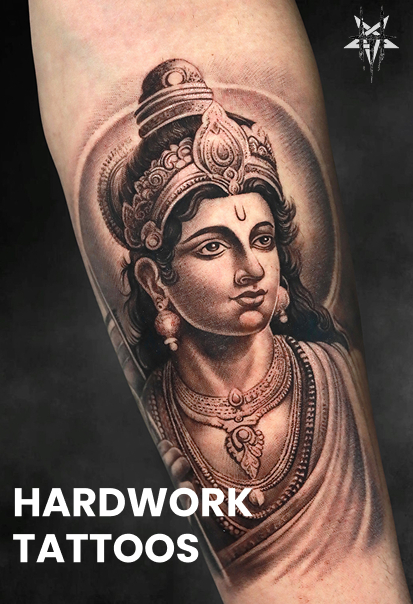
Sculpture Tattoos at Hardwork Tattoos, Brampton
Sculpture tattoos represent classical beauty, emotional depth, historical meaning, and museum-style detail for clients who seek bold storytelling on skin. Clients in Brampton choose sculpture-inspired tattoos to honour art history through lifelike shading and carved stone effects. Hardwork Tattoos builds each tattoo with anatomical precision, structured lighting, and clean gradients. Artists capture cracked stone, deep shadows, and carved contours with studio-grade accuracy. Many clients select sculpture tattoos to express identity or personal values linked to Greek gods, Roman emperors, or Renaissance heroes. Sculpture motifs offer strong visual impact on arms, backs, and sleeves, which makes them ideal for full-scale custom work.
Secure your session when you contact the studio team for scheduling.
What Are Statue and Sculpture Tattoos?
Sculpture tattoos are tattoos that recreate carved stone figures, busts, heads, or full statues using detailed shading and classical proportions. A statue tattoo covers the entire figure, such as Greek warriors or Roman heroes. A sculpture tattoo focuses on busts, heads, or carved fragments. Hardwork Tattoos uses high-detail grayscale shading and fine-line structure to bring marble-like realism onto skin. Many tattoos mimic the look of cracked stone, chipped surfaces, or smooth polished marble. Artists study museum references to preserve authenticity in facial expressions and anatomical features. Many clients choose this category for arm pieces, sleeves, and shoulder compositions. Below is a table that represents key differences between the statue and sculpture tattoos.
Style Type | Meaning | Ideal Placement |
Statue Tattoo | Full figure representation | Back, thigh, rib |
Sculpture Tattoo | Bust or head-focused art | Arm, forearm, chest |
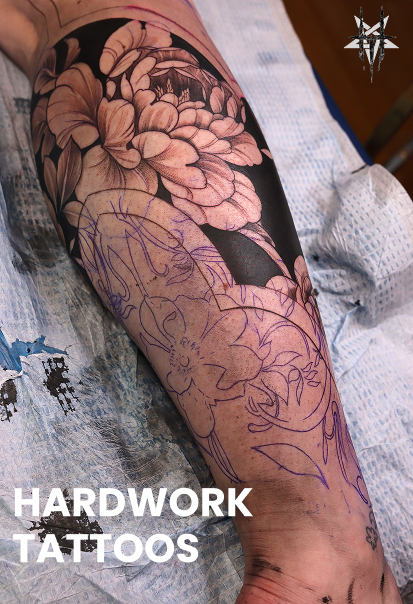
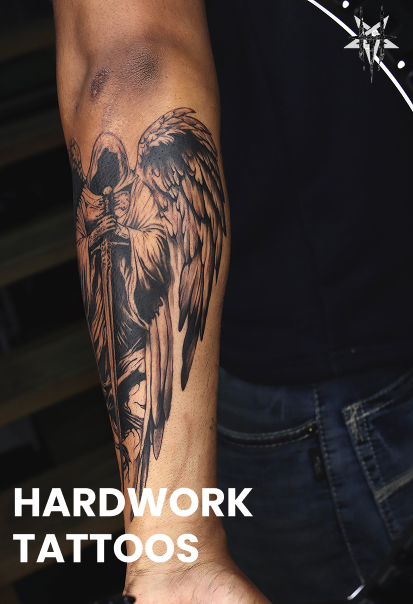
What Do Sculpture Tattoos Represent for Modern Tattoo Clients?
Sculpture tattoos represent strength, philosophy, spirituality, resilience, and classical identity in a visually powerful format. Many clients choose sculpture tattoos to express personal values through carved faces, stone fragments, or full-bodied figures. Artists at Hardwork Tattoos interpret each statue through clean proportions and detailed shading. Many people see Greek busts as symbols of wisdom or divine protection, while others view Roman figures as signs of leadership and stoic confidence. Angel sculptures create associations with spiritual guidance and emotional healing. Broken sculptures show the story of survival and recovery. Sculpture tattoos often attract clients who appreciate museum art, mythology, or old-world aesthetics.
What Are the Best Sculpture Tattoo Ideas for Hardwork Tattoos Clients?
The best sculpture tattoo ideas include Greek statues, Roman busts, Renaissance figures, female forms, and minimalist outlines. Hardwork Tattoos receives frequent requests for museum-inspired silhouettes, realistic stone portraits, and dramatic grayscale compositions. Many clients prefer mythological themes such as Medusa, Hermes, Athena, or angelic guardians. Some choose minimal line-art busts that create a refined and modern aesthetic. Full-sleeve statue compositions attract clients who want intense contrast and layered storytelling. History enthusiasts often select philosophers, emperors, or historical icons carved in clean stone textures.
Popular Client Choices
- Greek busts such as Apollo and Athena
- Roman emperor heads
- Renaissance classics such as David
- Female angel sculptures
- Mythological hybrids
- Minimalist outlines
- Full-sleeve classical compositions
How Do Artists at Hardwork Tattoos Approach Statue Tattoo Designs?
Artists at Hardwork Tattoos design statue tattoos with realism, grayscale depth, stone textures, and structured composition. Each design begins with a custom reference sketch followed by shadow mapping and texture planning. Artists focus on strong light direction to highlight carved surfaces and facial contours. Clients usually prefer heavy grayscale tattoos that mimic natural stone patterns. Fine-line designs appeal to clients who want clean and modern aesthetics. Custom stencils also help with proportion accuracy. Below is a tabular representation of the artistic techniques used in Sculpture tattoos.
Technique | Purpose | Result |
Micro-shading | Build depth | Marble-like finish |
Stone texture | Add cracks | Aged sculpture effect |
Line-art | Build outlines | Minimal silhouette |
Grayscale blend | Contrast control | Photo-real realism |
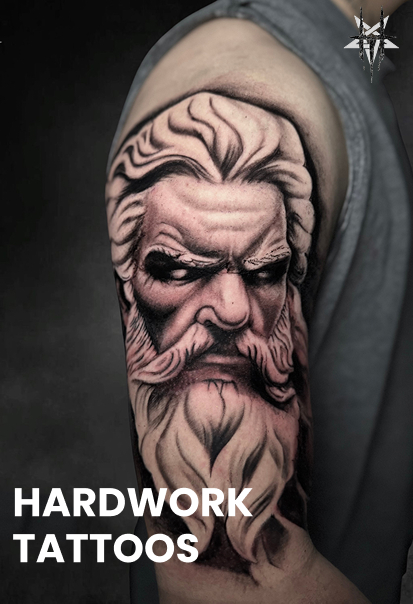
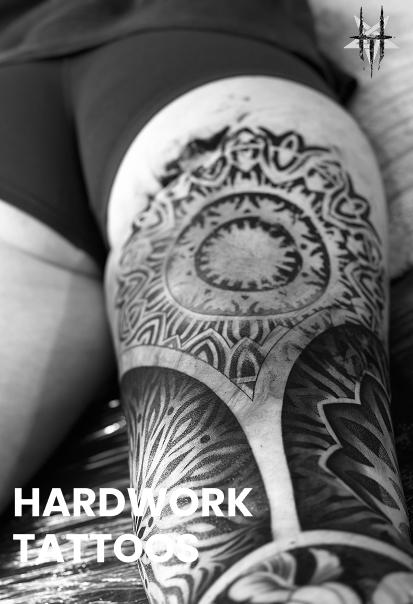
What Is the Meaning Behind Sculpture Tattoos for Brampton Clients?
Sculpture tattoos hold meaning connected to mythology, leadership, protection, and emotional resilience. Greek motifs express beauty and divine wisdom. Roman busts represent strength, discipline, and political power. Angel sculptures represent guidance and emotional healing. Broken statues represent survival, growth, and scars that turn into art. Many clients choose sculpture tattoos to connect their personal stories with classical symbolism.
What Does Each Sculpture Tattoo Motif Symbolize?
Motif-specific sculpture tattoos create unique meanings based on facial focus, head structure, gender expression, or thematic phrase placement. Face-only tattoos represent identity and introspection. Head-only tattoos represent thinking, intellect, and divine connection. Female sculptures represent beauty, grace, and mythological allure. The “World Is Yours” motif represents ambition and self-belief. Hardwork Tattoos works closely with clients to match each motif with personal meaning.
Motif | Meaning | Ideal Style |
Face | Identity | Realism |
Head | Intellect | Grayscale |
Female Form | Beauty | Fine-line |
Broken Head | Resilience | Deep shadow |
What Tattoo Styles Work Best With Sculpture Motifs at Hardwork Tattoos?
The best styles for sculpture tattoos include realism, fine-line, minimalist, neo-classical, and black and grey shading. Many clients prefer realism for dramatic impact on larger areas. Minimalist styles appeal to clients who want clean art. Neo-classical designs combine classical silhouettes with modern geometric shapes. Fine-line methods suit smaller areas such as wrists or forearms. Black and grey gradients create stone-like texture and carved depth.
Best Styles
- Realism
- Fine-line
- Minimalist
- Neo-classical
- Black and grey
- Ornamental fusion
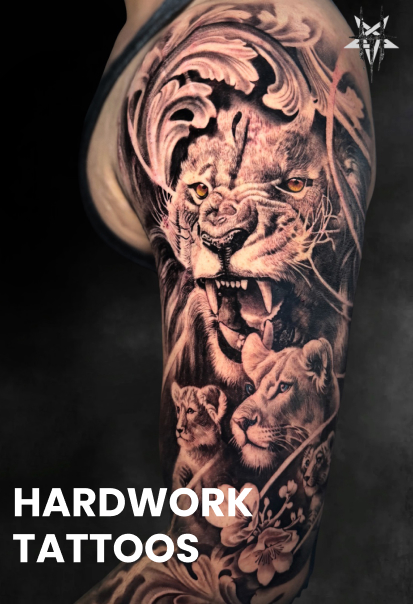
What Are the Most Popular Statues Used in Sculpture Tattoos?
The most popular statues include David, Venus de Milo, Apollo Belvedere, Roman emperor busts, Renaissance heads, and Greek god portraits. Many clients select David as a symbol of youth and bravery. Venus de Milo inspires clients who want feminine beauty. Apollo Belvedere appeals to people who admire artistry and divine power. Roman leaders represent leadership and structure. Renaissance busts create ties to creativity and historical legacy.

